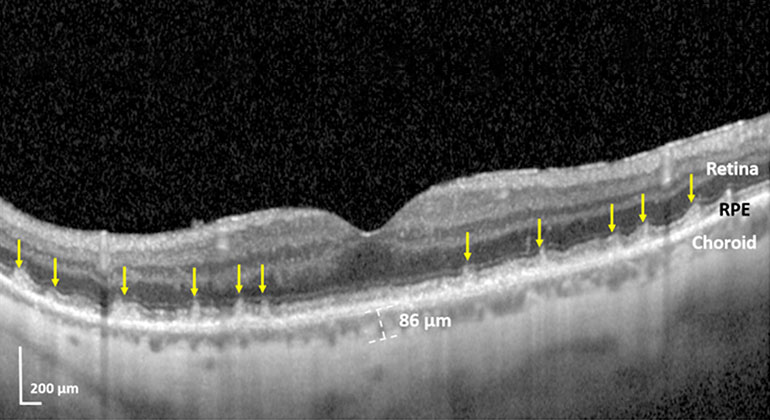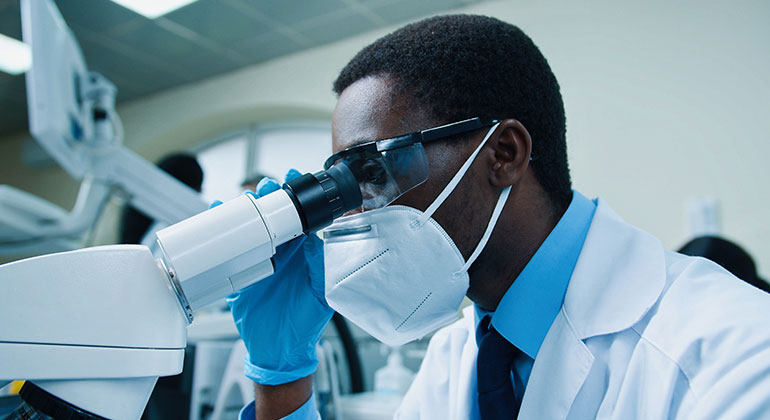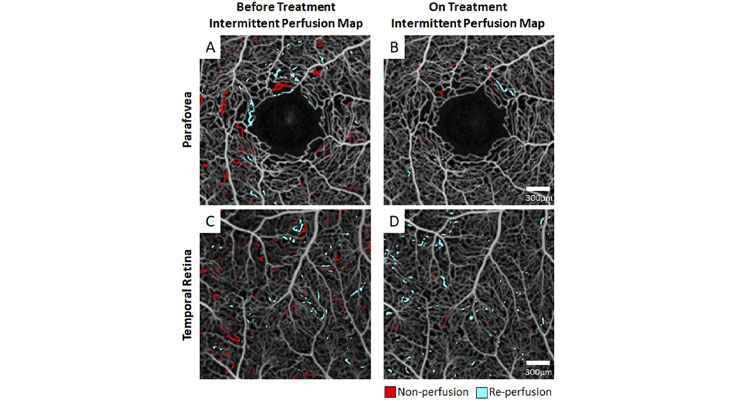Mount Sinai Launches First and Only Eye Stroke Service in New York City to Rapidly Diagnose and Treat Blinding Condition
Advanced technology and new protocols aim to expedite care to prevent permanent vision loss
Mount Sinai Health System has launched the first eye stroke service in New York City to expedite the diagnosis and treatment of patients who arrive at the emergency room with eye stroke—a medical emergency that must be addressed as quickly as possible to prevent irreversible vision loss.
Four emergency departments in the Mount Sinai Health System are now the only sites in New York City equipped with advanced high-resolution imaging systems to rapidly detect eye stroke. These, along with new communication and treatment protocols between emergency medicine physicians, ophthalmologists, and the stroke service, allow patients to have an urgent procedure to preserve their vision within a few hours (or less) of arriving at the hospital.
“Eye stroke is one of the most urgent eye conditions and there’s a small window of opportunity for treatment to prevent blindness. Mount Sinai is proud to offer this innovative service designed to ensure patients get immediate treatment to save their vision. This is a critical service the New York region has needed for a long time,” says Richard B. Rosen, MD, Chief of the Retina Service for the Mount Sinai Health System. “Patients need to know that if you wake up with vision loss in one eye, go to a Mount Sinai Health System emergency room immediately. Our ability to restore vision from an eye stroke is extremely time-sensitive. The day after is unfortunately too late. If the cause is something other than a stroke, we will send the patients to one of our ophthalmologists for appropriate care.”
Sudden vision loss in one eye may be a sign of eye stroke, also known as central retinal artery occlusion. It happens when the main artery that supplies blood to the retina is blocked, typically by a blood clot, depriving the retina of oxygen. The retinal nerve cells that allow you to see die within hours unless blood flow is restored. The clot needs to be dissolved within 12 hours of losing vision (ideally 6 hours or less) or it will lead to permanent vision loss.
To expedite care, Mount Sinai’s Department of Ophthalmology installed high-tech eye imaging systems known as optical coherence tomography (OCT) at The Mount Sinai Hospital, Mount Sinai West, and Mount Sinai Queens—sites with large emergency rooms and stroke teams. New York Eye and Ear Infirmary of Mount Sinai (NYEE) also has this capability. OCT technology, pioneered at NYEE, is a non-invasive way to detect microscopic changes in the retina in minutes, enabling rapid diagnosis and immediate treatment.
When a patient arrives at the emergency room with a possible eye stroke, the neuroradiology team is urgently called to do the scan. They send the images to the on-call retinal specialist who can make an instant diagnosis. If they confirm an eye stroke, the patient is immediately sent to the Mount Sinai stroke team, where interventional neuroradiologists dissolve the clot with an infusion of tissue plasminogen activator (tPA) —a clot-dissolving drug—into the blocked ophthalmic artery.
If a patient with suspected eye stroke arrives at a Mount Sinai emergency department that does not have this service, they will be transferred to one of the hospitals that’s equipped with OCT technology and treatment capability.
“Central retinal artery occlusion is a stroke emergency that without rapid therapy can render patients irreversibly blind. The state-of-the-art, integrated service that we are pioneering at Mount Sinai will save patients’ vision and act as a model for other centers to replicate,” says Reade De Leacy, MD, Associate Professor of Neurosurgery, and Radiology, at the Icahn School of Medicine at Mount Sinai and Site Director of Cerebrovascular Services at Mount Sinai Queens.
"Stroke to the eye, like stroke to the brain, is a time-sensitive medical emergency. At the Mount Sinai Health System, our multidisciplinary teams use cutting-edge resources to deliver potentially vision-restoring care to these patients as quickly as possible," says Michael Fara, MD, PhD, Interim Director of the Comprehensive Stroke Center at The Mount Sinai Hospital.
“We have already seen results and saved vision as a result of our eye stroke service,” says Gareth Lema, MD, PhD Site Director of Quality, Safety, and Experience for the Ophthalmology Department at The Mount Sinai Hospital. “While we have created a unique service to save and preserve vision if caught quickly, the message is for patients to not wait and think it will resolve on its own—a common issue with eye stroke patients.”
The New York Eye and Ear Infirmary Research Foundation provided the support to bring OCT technology to the emergency rooms within the Mount Sinai Health System.
About the Mount Sinai Health System
Mount Sinai Health System is one of the largest academic medical systems in the New York metro area, with more than 43,000 employees working across eight hospitals, over 400 outpatient practices, nearly 300 labs, a school of nursing, and a leading school of medicine and graduate education. Mount Sinai advances health for all people, everywhere, by taking on the most complex health care challenges of our time — discovering and applying new scientific learning and knowledge; developing safer, more effective treatments; educating the next generation of medical leaders and innovators; and supporting local communities by delivering high-quality care to all who need it.
Through the integration of its hospitals, labs, and schools, Mount Sinai offers comprehensive health care solutions from birth through geriatrics, leveraging innovative approaches such as artificial intelligence and informatics while keeping patients’ medical and emotional needs at the center of all treatment. The Health System includes approximately 7,300 primary and specialty care physicians; 13 joint-venture outpatient surgery centers throughout the five boroughs of New York City, Westchester, Long Island, and Florida; and more than 30 affiliated community health centers. We are consistently ranked by U.S. News & World Report's Best Hospitals, receiving high "Honor Roll" status, and are highly ranked: No. 1 in Geriatrics and top 20 in Cardiology/Heart Surgery, Diabetes/Endocrinology, Gastroenterology/GI Surgery, Neurology/Neurosurgery, Orthopedics, Pulmonology/Lung Surgery, Rehabilitation, and Urology. New York Eye and Ear Infirmary of Mount Sinai is ranked No. 12 in Ophthalmology. U.S. News & World Report’s “Best Children’s Hospitals” ranks Mount Sinai Kravis Children's Hospital among the country’s best in several pediatric specialties.
For more information, visit https://www.mountsinai.org or find Mount Sinai on Facebook, Twitter and YouTube.

Blinding Eye Disease Strongly Associated With Serious Forms of Cardiovascular Disease
Nov 17, 2022 View All Press Releases
High-Tech Imaging Offers New Way to Detect Signs of Early Glaucoma
Aug 02, 2022 View All Press Releases
Blinding Eye Disease Is Strongly Associated With Heart Disease and Stroke
Jul 12, 2022 View All Press ReleasesMount Sinai Recruits Internationally Recognized Ophthalmologists to Expand Leadership
Dec 17, 2018 View All Press Releases
